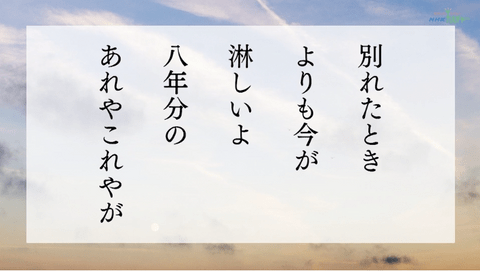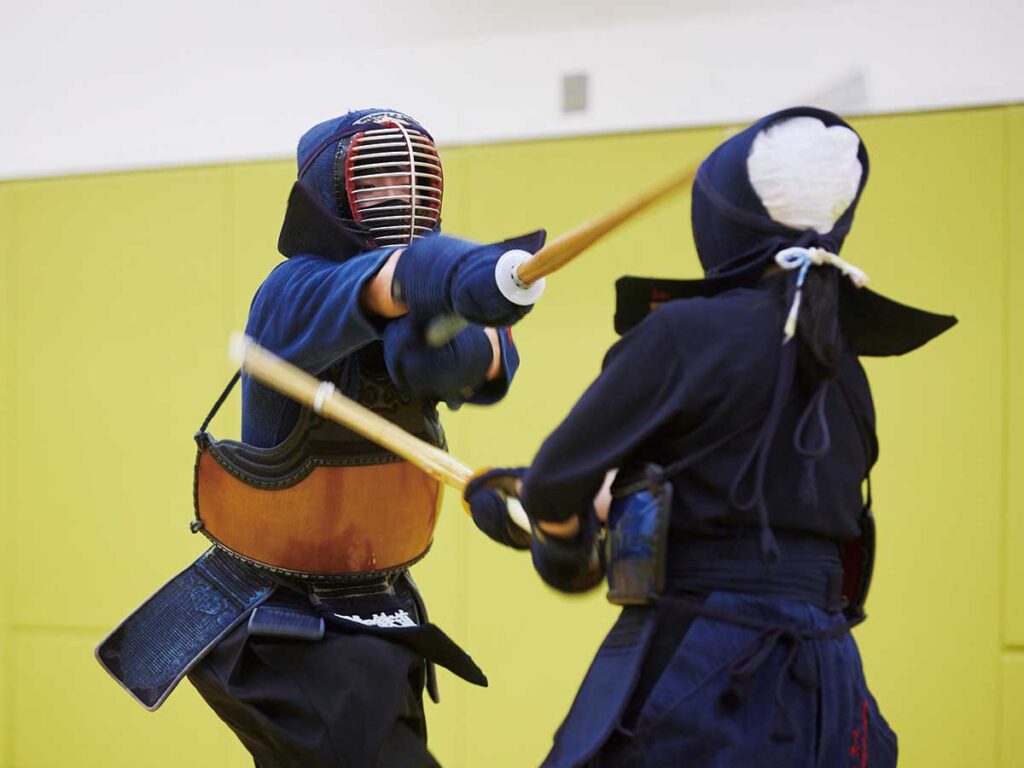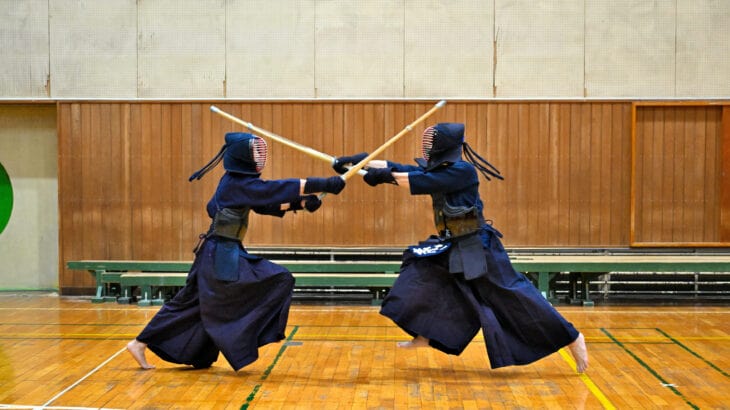
Kendo dans are more than just sporting achievements; they symbolize the owner’s discipline, concentration, and leadership abilities.
These qualities are valuable in many professions, so listing your Kendo degree on your resume is a great opportunity to highlight your versatile abilities.
However, when listing your Kendo dan rank on your resume, it is important to properly convey its significance.
This article details how to include your Kendo dan rank on your resume and how it can help you in the workplace.
In addition, we will explore how to make the most of the true value of Kendo in the professional world by providing specific ways to write about your Kendo rank and how to discuss topics during interviews. .
Let’s take a closer look at how Kendo Dan rank affects your resume in the following headings.
目次
- 1 Introduction: How Kendo Dan Rank Affects Your Resume
- 2 Basic knowledge of Kendo Dan
- 3 When to include Kendo rank on your resume
- 4 Effective way to write kendo rank
- 5 Emphasize your skills in the workplace by making use of your Kendo rank
- 6 How to bring up the topic of Kendo Dan in an interview
- 7 Frequently asked questions and answers (FAQ)
- 8 Summary: Final checklist when listing Kendo dan rank on your resume
Introduction: How Kendo Dan Rank Affects Your Resume
Kendo dan is not simply an indicator of technical ability.
It is also proof that the owner has accumulated mental and physical training over a long period of time and has passed rigorous tests.
In this section, we will delve into what the Kendo Dan rank specifically indicates and the benefits of including it on your resume.
What does Kendo rank indicate?
Kendo Dan rank indicates the level of mastery of Kendo techniques, as well as the owner’s mental maturity and character development.
Kendo training not only improves physical strength, but also teaches many important values for success in society, such as civility, perseverance, leadership, and self-control.
Therefore, Dan can be a symbol of all these qualities.
Benefits of listing Kendo rank on your resume
There are multiple benefits to including your Kendo dan rank on your resume.
First, it can highlight an individual’s self-discipline and ability to achieve goals.
The process of earning a dan in Kendo requires a high level of professionalism and continuous effort, which are highly valued traits in the working world.
Kendo also develops psychological strength in the face of difficulties and calmness in difficult situations, and these traits are valued in many industries.
In addition, kendo dans can also serve as a bridge between different cultures.
In an international business environment, culturally based activities such as kendo are often valued as evidence of cross-cultural understanding and may be seen as an element that promotes diversity within teams.
From these points of view, listing your Kendo dan rank on your resume is an effective means of demonstrating an applicant’s multifaceted skills and personality, and will leave a strong impression on the interviewer.
In the next section, we will explain in detail the specific types of Kendo Dans and the conditions for obtaining them.

Basic knowledge of Kendo Dan
The dan system in Kendo is an important indicator for evaluating a swordsman’s technical level and spiritual growth.
In this section, we will explain the types of dans in kendo, the conditions for obtaining them, and the technical requirements and evaluation criteria for each dan.
Types of Kendo Dans and conditions for obtaining them
Dans in Kendo typically range from 1st to 8th dan, and each dan requires passing a specific exam.
Obtaining the first dan indicates that you have mastered the basic techniques of kendo, while the 8th dan requires extremely high technique and deep understanding as a kendo master.
Examinations for each dan generally include kata (performance of prescribed movements) and kumite (a form of interpersonal competition), and each exam has specific requirements for age and length of practice since obtaining the previous dan. there is.
Technical requirements and evaluation criteria for each level
Shodan to Sandan:
These dans are the stages where you solidify the foundation of your technique. In the 1st dan, the accuracy of basic strikes and the fundamentals of form are evaluated, and in the 2nd and 3rd dan you are required to further develop those techniques. The evaluation focuses not only on the accuracy of technique, but also on the flow of movements and sense of rhythm that are unique to Kendo.
4th to 6th dan:
Intermediate dan requires not only technique but also tactical understanding. In the 4th Dan exam, the key points in the evaluation are understanding the appropriate distance and timing from your opponent. At 5th and 6th dan, more emphasis is placed on a swordsman’s spirituality, calmness during matches, and tactical diversity.
7th Dan and 8th Dan:
The higher ranks require not only technical proficiency, but also deep insight into Kendo and dignity and dignity as a swordsman. The exams for these tiers are very tough and the passing rate is low. Evaluations are based on both kata and kumite, and reflect the swordsman’s overall sophistication and commitment to kendo.
Kendo’s dan system provides a path for swordsmen to continue honing their skills and spirit.
The high level of technique and depth of spirituality required by each rank encourages the growth of swordsmen and demonstrates the importance of lifelong training.
The next section details exactly how and when to include these dans on your resume.

When to include Kendo rank on your resume
Kendo Dan rank may be considered a highly valuable qualification in certain professions and workplaces.
Understanding the appropriate timing and importance of including your kendo rank on your resume will lead to effective self-promotion when applying for a job.
In what types of jobs is Kendo rank important?
Occupations where Kendo dan is particularly valued include education-related occupations (particularly physical education teachers and martial arts instructors), public safety-related occupations such as police and fire departments, or security work.
In these fields, not only the physical ability cultivated through Kendo, but also mental strength, leadership, and situational judgment are highly valued.
Additionally, some companies may evaluate Kendo dan rank as an indicator of team management and leadership ability.
Appropriate situations to highlight your Kendo rank
The best time to include your Kendo degree on your resume is when the degree is directly related to the job or highlights the applicant’s personality and abilities.
For example, if your job requires high stress tolerance, team coordination, and leadership skills, a Kendo dan rank is good evidence that you possess these abilities.
Especially if you are applying for a management or team leader position, it is effective to bring to the fore the experience you have cultivated in Kendo.
When highlighting your Kendo degree on your resume, it’s important to include a specific explanation of how it will help you with your job.
Your resume will be more effective by listing the specific skills and experiences you’ve gained through Kendo and clearly explaining how these will contribute to your success in the workplace.
The next section details how to effectively list your Kendo dan rank on your resume.

Effective way to write kendo rank
When writing your Kendo dan rank on your resume, the key points are how to write it and explain it.
Properly listed Kendo Dan levels give a professional impression to those looking at a resume and can effectively highlight a candidate’s diverse skills and experience.
Kendo rank format on resume
When listing your Kendo rank on your resume, you generally add it to the “Qualifications/Certifications” section.
This section is usually placed after education and work experience and is where specific skills, licenses, and certifications are listed.
When writing a Kendo dan, please clearly state the name of the dan and the month and year it was acquired.
For example, it is recommended to write in the format “Kendo: 4th Dan – Obtained in March 20XX.”
Example descriptions and how to explain them effectively
It is important to not only list the Kendo dan, but also to specifically explain how the dan contributes to the job applicant’s professional abilities and character. For example, you can write:
Example:
- Kendo 4th Dan — Acquired in March 20XX
- Students practice three times a week and participate in regional competitions once a month to develop their leadership and teamwork skills in an organized environment.
- Cultivate high stress tolerance through mental and physical self-management.
This statement highlights the educational aspects of kendo and how it contributes to personal growth, and emphasizes to those looking at your resume that your qualifications are more than just a hobby. .
Also, acquiring a dan in Kendo is a good example of the mental strength, planning, and tenacity that can be gained through the process of setting and achieving goals.
This allows job seekers to specifically communicate what value they can provide to potential employers.
In the next section, we’ll dig into how to bring up the topic of kendo dans during an interview.

Emphasize your skills in the workplace by making use of your Kendo rank
Holding a kendo dan is more than just technical ability, it is directly related to many workplace skills.
This section explores how the abilities developed in Kendo can lead to professional skills, and how Kendo experience can enhance an individual’s personality and ability to adapt in the workplace.
The relationship between the abilities cultivated in Kendo and occupational skills
The mental and physical techniques learned in Kendo are directly connected to many skills needed in the workplace.
For example, Kendo training develops concentration, which directly affects your ability to efficiently complete tasks at work.
Kendo also requires you to judge the distance and timing of your opponent, which can be useful for improving project management and team communication skills.
Additionally, continuous practice and preparation for dan exams will strengthen your ability to self-manage and maintain sustainable performance.
Personality and workplace adaptability revealed by Kendo experience
The experience gained through Kendo greatly influences the personality of job seekers and increases their ability to adapt in the workplace.
Kendo emphasizes courtesy and respect, which leads to a professional attitude in the workplace.
Patience and composure during games and practices also demonstrate the ability to remain calm in difficult situations and high-pressure work environments.
Kendo’s emphasis on unity and cooperation strengthens your qualities as a team player and develops your ability to work effectively with people from diverse backgrounds.
Kendo dan rank can be an important indicator that reinforces these occupational skills and humanity.
By mentioning your Kendo dan rank on your resume and making it clear how these abilities will be useful in the workplace, you will make a strong impression on the interviewer.
The next section details how to bring up kendo dan rank in an interview.

How to bring up the topic of Kendo Dan in an interview
Having a degree in Kendo can be a strong point of appeal during interviews.
By bringing up the topic in the right way, you can effectively demonstrate your humanity, professionalism, and mental strength to face challenges.
Effectively raising the topic of kendo dans in interviews
When talking about your Kendo dan level during the interview, it is important to specifically explain how your experience can be utilized in the job.
First, I will briefly introduce my background in Kendo, the lessons I learned from it, and how it contributed to my personal growth.
If the interviewer is interested in the topic, use specific anecdotes to detail how your kendo experience will benefit your professional abilities and interpersonal relationships.
-
Leadership and Teamwork : “As a team captain in Kendo, I learned how to bring team members from diverse backgrounds together. Especially before important matches, I have to motivate my team and keep them focused. I was responsible for formulating strategies for this project.I am confident that I will be able to utilize this experience when leading a project team at work.”
-
Stress Management : “Kendo competitions require you to remain calm under high-pressure situations. Through this, I learned how to transform pressure into positive energy. This skill This will help you stay calm and efficient when a project has a deadline or an unexpected problem arises.
-
Persistence to achieve goals : “The process of earning a dan in Kendo required continuous effort and self-improvement over a long period of time. This is similar to setting goals and working towards them in the business world. It taught me the importance of hard work.”
Kendo dans are a great tool to show your strong personality in an interview.
The key to success is being clear about how your experience connects to your workplace skills and communicating this effectively to your interviewer.
The following section provides further details about Kendo Dan through frequently asked questions and answers.

Frequently asked questions and answers (FAQ)
Many questions often arise when including your Kendo dan rank on your resume.
This section provides answers to common questions about writing Kendo Dans, and provides tips to avoid writing mistakes and misunderstandings.
Answers to common questions regarding Kendo rank descriptions
-
Q: Should I list my Kendo dan rank on my resume? A: Kendo Dan is especially useful when applying for positions that require leadership, teamwork, and stress management skills. It can also be an example of self-discipline and spiritual maturity.
-
Q: In which section should I put my Kendo Dan level? A: Please list it in the “Qualifications/Certifications” section along with the date of acquisition. This will ensure that you are properly presented alongside your other qualifications and skills.
-
Q: If Kendo rank is not directly related to work experience, shouldn’t it be listed? A: It’s still worth mentioning. Kendo dans demonstrate your personal characteristics and abilities, and help you showcase your potential in the workplace.
Points to avoid writing errors and misunderstandings
-
Provide accurate information : Accurately state your dan rank and year of attainment to avoid misleading information. Additionally, it will be more reliable if you also specify the name of the group or organization where you obtained the Kendo Dan.
-
Make the connection clear : Explain in your resume and interview how your Kendo dan will help you with the job. You may want to elaborate on how this tier shapes an individual’s abilities and character and contributes to success in the workplace.
-
Avoid overemphasis : Kendo rank is an important factor, but it is important not to rely too much on it and to list it in a balanced manner with other qualifications and experience. Carefully consider how your Kendo rank adds value in the context of your overall resume.
These FAQs will help you clear any questions you may have when listing your Kendo dan rank on your resume and help you promote yourself more effectively.
As a next step, use these points as a reference to review your resume and list your Kendo rank in an appropriate manner.

Summary: Final checklist when listing Kendo dan rank on your resume
A final check is very important when listing your Kendo dan rank on your resume.
Use this checklist to ensure your resume is accurate, professional, and that your Kendo Dan rank maximizes your professional appeal.
Things to check before writing
-
Accuracy of Dans : Double check your Dans and the year they were earned to ensure there are no errors. Also make sure that the ranks listed are up to date.
-
Assess relevance : Re-evaluate whether the rank is really important to the job you’re applying for. Be clear about how your Kendo degree contributes to the skills and personality requirements of the position, and make sure it aligns with other sections of your resume.
-
Context Appropriateness : Check whether the section containing the dan level is appropriate. It is common to list this in the “Qualifications/Certifications” section, but another option is to mention it briefly in your self-introduction.
-
Describe specific accomplishments : Check if you can list the specific skills and experience you gained by obtaining your Kendo dan and explain how they will help you perform your job.
Final confirmation of Kendo rank and its importance
Mentioning your Kendo rank is an element that highlights your individuality and abilities on your resume.
If you neglect final confirmation, incorrect information may be entered or the relevance to the job may become unclear.
This can have a negative impact on your job search, so it is very important to ensure that the information you provide is completely accurate and relevant.
It is also important to be prepared so that you can confidently give specific examples when asked about your Kendo dan during the interview.
Use this checklist to finalize your resume and ensure that your Kendo Dan rank best represents your professional and personal qualities.









